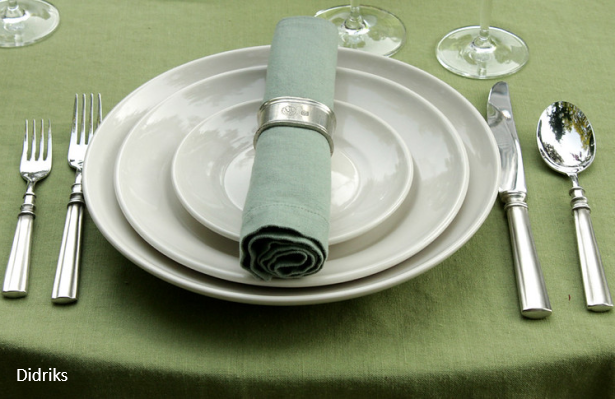Haute for Teacher: Joule

Why hello there, and welcome to a completely new segment of Kitchen Catastrophe, definitely not invented at 1 AM Thursday Morning because Jon had no idea what to do for the day….Because it’s actually 1:58 AM, so you should round to 2. Anyway, in classic Jon fashion I had spent several hours today with no idea of what I was going to do for today’s post, and decided to go wallow in some Seattle food reporting to see if anything sparked my interest. AND something did: I read something that…almost HURT me, so I was instantly motivated to post about it on FB or Twitter…and then realized that I don’t think most of my readers would even UNDERSTAND what had caused the nigh-electric surge within me.
So, today’s post is going to be very simple: I found the five-course Valentine’s Day menu for a semi-local restaurant, Joule, and I’m just going to explain to you what the various dishes are/what they components mean. Basically, you know how you end up in a fancy restaurant staring at a menu with a bunch of words you don’t understand? I’m here to help give you a leg-up, and serve as your culinary translator. And while yes, this is focused on one specific restaurant, several of the details/ingredients are going to be applicable to other fine-dining establishments, so I’m sure you can gain from this.
Look, if its the forks scaring you, just remember to start from the outside and work in.
First up, just for context: Joule is a Seattle restaurant that I have never been to. This isn’t a review of their restaurant, or this menu. They didn’t pay me for this. I almost certainly WILL NOT actually eat this menu, for reasons I will touch on at the end. I literally was just wandering through a list of Seattle restaurants, saw Korean-inspired, went to their website, and viscerally reacted to this special menu. We have no formal connection, nor have I asked their permission, so if I have to delete this post, we will have learned that they’re very active in checking their mentions.
Alright, so let’s break this menu down into chunks. First up,
The Snacks Section
Just so you don’t think it’s tweet-speak: the letters on the end are for what ISN’T in the dish: Nut-free, Dairy-free, Gluten-Free, etc. Later there’ll be some VEG, which…could be Vegetarian or Vegan.
Now, every other section says “choice of”, so I PRESUME that you’ll get all three of these to share amongst the table, but I could be wrong. Great start to the translation process, both in an ironic sense, and in a “look, clarity in translation can be hard.” You ever hear about the time we thought Russia was threatening us, because someone translated one of Khrushchev’s lines in a speech as “We will bury you”? Which is what he SAID, yes, but the implication wasn’t a threat, it was a brag: translators have suggested that a more appropriate tonal translation would be “we will outlast you”, “we will see you buried”, or “We will handle your funeral.”
We did not take it that way.
My failings as a translator aide, first dish: Sunchoke lumpia. Sunchokes are a vegetable we haven’t talked about in a while, but to recap: they’re a root vegetable that that have a crisp texture, and slightly nutty/bitter flavor. They’ve been compared to artichokes, water chestnuts, hazelnuts, jicama, etc. “Lumpia”, if you’ve never had it, are great. They are basically Indonesian/Filipino spring rolls: relatively small/thin tubes of fried crispy shell around a filling. They can be sweet or savory, obviously these ones are sunchoke. Depending on if the sunchoke is cooked, this is going to be like a spring-roll with crisp veggies inside, or it’s going to use cooked sunchoke for a contrasting texture, and it’ll be like a croquette: crisp on the outside, soft in the middle. (Note: this dish isn’t tagged as Vegetarian on the menu, so I assume there’s some kind of meat inside with the sunchoke.)
It’s served with Burnt Honey, a trending ingredient I’m going to have to talk about more at some point, but for now can be summarized as “You know how you make caramel out of sugar? Turns out you can do basically the same thing to honey” you reduce some of the sweetness, add complexity, simple stuff.
Apparently, it’s often used to make medovik! I would claim that I’m surprised at the amount of Russian in this post about a Korean-inspired restaurant, but Imperial Russia’s influence on fine dining is actually pretty common.
Chinese mustard is…mustard, from China. Specifically, Chinese Hot Mustard is just…less processed yellow mustard powder. That’s it. We ADD stuff to our mustard to make it less of an attack on our sinuses, they don’t.
Next item: Paddlefish caviar. Paddlefish are the American freshwater variety of sturgeon, which look like what happens when swordfish retire.
I’m not saying its’ an ugly fish, I’m saying it looks like it used to be somebody, and gave up a decade ago.
Anywho, since they’re technically sturgeon, their eggs do count as caviar. It’s not the same as “normal” caviar, but it’s close enough for most people. It’s the “cheap” caviar, that’s only around $25 an ounce.
Crème Fraiche is, basically, French Sour Cream: less sour, and with more fat. “Sesame Crème Fraiche” means they’ve worked sesame seeds or paste into it.
Seaweed cracker probably refers to a rice cracker with seaweed IN it, rather than a pure dried seaweed
So this is just caviar and sour cream on a cracker. Very ‘normal’ high-class food. It will likely taste quite salty and rich.
A useful descriptor for Eleanor Young from Crazy Rich Asians as well.
Last one: Sweetbread skewer, spicy teriyaki, parsley. I HOPE the only word I need to explain here is “Sweetbread”, which is a form of organ meat: sweetbreads are the pancreas or thymus glands of calves or lambs. They taste, as their name suggests, sweeter and softer than normal meat, with some minerality common in the offal department. While not a common dish (the cooking process is a little off-putting, as you have to wash and soak them to get an outer membrane off), most chefs concur it’s quite nice, especially when you can get some nice crust on the outside for contrast.
Alright, that’s the appetizers done.
FIRST COURSE
I like how one has “heart of palm salad” and one has “crispy hearts of palm”.
First up: heart of palm. Don’t think we’ve cooked with it before on the site, name is pretty self-explanatory: it is the heart of a type of palm tree. Flavorwise, the get compared to artichoke hearts, texture-wise they’re between water chestnuts and carrots.
Chicory, in the US, refers to a type of endive, which is a kind of salad leaf, often used for little cups. It’s on the more bitter side, not as strong as say, raddichio, but it’s got a little more bite than your standard lettuce.
Black garlic is a fermented and slow-cooked form of garlic that is supposed to be to roasted garlic what roasted garlic is to raw garlic, with a little more earthiness.
“Winter citrus” is mainly notable in that it refers traditionally to the more bitter citruses: grapefruit, blood oranges, etc. So a winter-citrus salad is going to be acidic and bracing.
And Chrysanthemums are flowers. You should know that. Unless you’ve never had to read it before.
SECOND COURSE
“How do I make sure people are happy with their $115 dinner? Ah yes, everyone gets black truffle.”
“Black truffle jook” is the thing I read that caused me to want to write this post. Jook or juk is the Korean name for rice porridge, also known as Congee. So a Black Truffle jook is probably most closely comparable to a mid-point between “black truffle risotto” and like, “truffle chowder”, in terms of consistency. Dungeness Crab on top, with mayu, Japanese Black Garlic Oil (an oil made by…burning garlic. Used to add contrasting bitterness to rich dishes like ramen.) Like, I don’t particularly like crab, but the idea of that dish was toe-curling…and I’ve just realized technically obtainable using ingredients in my home. Keep an ear out on that. The OTHER thing I found wild about it is, as noted in our congee post…it’s traditionally a fairly simple dish. Sure, it can be studded with sea-food or other ingredients, but it is in many ways the East Asian version of “Chicken Noodle Soup”: something homey and warm. So there’s definitely an element of contrast being played with in combining expensive, fancy truffle and simple, homey jook here.
For the other option…you’re dealing with an interesting inversion of the same ideas: ‘nage’ is a seasoned poaching liquid used for cooking seafood. So, as I read this dish, you’re getting black truffle wontons in a Dungeness crab broth, with pickled garlic. So you can either get the truffle-infused rice soup with crab meat and garlic oil, or you can get the truffle-stuffed wontons in crab-infused soup with pickled garlic. Which makes sense: you had the appetizer and salad, so it’s time for a soup course. Meaning that our next option should be…
The Entrees
It would be wild if these weren’t nut-free.
Koji is the fungal spore used to make sake, shochu, and sometimes, miso and soy sauce. So “koji-marinated” is roughly comparable to “wet-aged” or “salt-cured” in terms of what you can expect it to have done to the wagyu flat-iron: complexity, funkiness, saltiness.
Charred Cucumber Kimchi…I presume means ”cucumber kimchi that has been charred”, not “kimchi made of charred cucumbers”, but you’re expecting acidity, spice, and bitterness either way. Charring/grilling Kimchi tends to kill off some of the bite of it, so it’s not going to be as strong as raw kimchi.
Celeriac is celery root. When it’s served with steak it’s typically made into a mash, for a more herbaceous/slightly bitter alternative to mashed potato. It’s not uncommon in steakhouses, so this one is playing more toward “normal”, as such a thing can be labeled.
Doesn’t this steak look normal? OF COURSE NOT, because it’s venison.
Fermented Black Beans or douchi are a popular ingredient in Chinese cooking: if you’ve had “chicken in black bean sauce”, you’ve had the sauce they’re marinated the duck in. If you haven’t, neither have I, so I really can’t help you too much.
Larb, as we’ve made before, is a Southeast Asian salad with a lot of acidity, heat, and often meat, making it a FASCINATING service option for marinated duck breast. Like, assuming there’s no meat, smoked cucumber larb sounds weirdly like a Southeast Asian version of, say, Pico De Gallo.
Dessert
Most of these words should be intelligible, though perhaps arranged confusingly.
The only word I think I need to explain here is bergamot, which, while a popular element in men’s colognes, and an occasional tea, is a bitter citrus. It’s actually the defining citrus element of Earl Grey tea, which is just black tea with bergamot oil. So it’s definitely meant to be a “clean” or “refreshing” backdrop/counterpoint to the miso caramel and toffee mochi.
All in all, it sounds like a spectacular Valentine’s Day dinner…which is why I am probably not having it. Valentine’s Day is Monday this year, and a check of the reservation situation at the restaurant shows that they don’t do 1-tops (at least, not through the online portal), and 2-tops are tied up, so I’d need to put together a team of 3 people, all willing to drop $120, to go spend Valentines WITH ME, in Seattle, on a Monday evening. Is it impossible? No. Is it likely? Laughably not.
But hopefully this breakdown helped you learn a couple terms you might see on high-end menus. We’ll certainly return to try and breakdown more menus into terms accessible to the everyman. Hell, if you run into a menu you’d love for us to break down, hit us up and send it to us! Until then, I’m going to wander off and see if I can figure out how to put together that Black Truffle Jook at home. I KNOW we bought black truffles from our local Italian deli at least once…
MONDAY: WE RING IN THE LUNARY NEW YEAR WITH SOME CHINESE FOOD. WHAT KIND? I DON’T KNOW. NOODLES OR DUMPLINGS IF I HAVE MY WISH.
THURSDAY: I ORDERED A BUNCH OF DUMPLING SAUCES FOR THE NEW YEAR THING, WHICH…MIGHT BE HERE IN TIME TO DO A TASTING ON THURSDAY? MAN I HOPE SO, BECAUSE I AM CURRENTLY LEANING ON THAT.
















